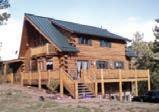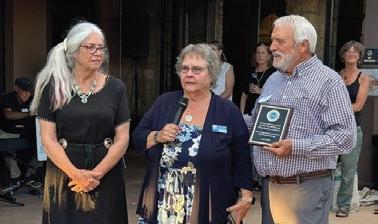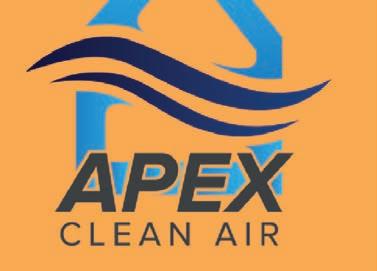With
Why More Buyers Are Taking a Second Look at ARMs
Many purchasers anticipate rate cuts ahead. By using an ARM now, they will enjoy a slightly lower rate during the initial fixed period. Some have the hope that, instead of increasing on the adjustment date, the rate will remain the same or possibly come down. Experts say that the current flatter yield curve supports that theory.
While ARMs aren’t one-size-fits-all, they make a lot of sense for certain buyers, especially those with short- to mid-term homeownership plans or who are financially stable enough to absorb a future rate increase if needed.
Has a stable income and good credit or anticipates increases in income that would allow them to keep up with increases, in case their bet on the direction of rates turns out to be wrong;
Has a financial safety net in case payments rise; and
Understands how interest rate adjustments work.
This isn’t about gambling on the market, it’s about strategic planning. That’s where an experienced mortgage loan officer becomes invaluable. They can help you compare options, understand caps and margins, and decide whether an ARM aligns with your financial goals.
ARMs today are far more borrowerfriendly than they were in decades past. Most no longer carry prepayment penalties, and most feature rate caps that protect against sharp increases. And if rates go down, you may even benefit from lower payments and, of course, borrowers always have the option to refinance at a fixed rate when the time is right.
The Bottom Line In a high-cost housing market like Denver’s, flexibility matters. An adjustable-rate mortgage could be a smart, strategic choice; especially when guided by the right mortgage professional. Whether you're buying your first home, upsizing for a growing family, or simply exploring ways to maximize your budget, it’s worth having a conversation with a trusted loan officer.
Jaxzann Riggs and her team at The Mortgage Network have helped thousands of Colorado homebuyers find the right loan for their life plans—whether that’s an ARM or something else entirely. To explore your options and see if an ARM could work for you, call Jaxzann on her cell, (303) 990-2992 or visit www.TheMortgageNetworkOnline.com
Temperatures Rising, Homeowners Without Air Conditioning Are Asking What’s the Best Way to Add It
I have a listing coming up later this summer in the Beverly Heights section of Golden. It has hot water baseboard heating, which is wonderful, but that means there are no ducts to distribute air from an A/C compressor.
Homes with forced air heating systems have it easy. A “chiller” connected to an outdoor A/C compressor can be mounted above the firebox for a few thousand dollars. It uses the same ducts as the furnace, and the forced air unit becomes an “air handler” for delivering the cooled air.
I have previously promoted the idea of using a heat pump to drive that “chiller” unit. Not only does it provide needed cooling, but the heat pump can also provide efficient heating in the winter, leaving the gas furnace idle or used only when it’s colder than the heat pump can handle (below 0º F with today’s cold climate heat pumps).
But what if there are no ducts, as in my listing in Beverly Heights?
The answer depends partly on the style of the house. Is it one-story, two-story, or splitlevel? The one-story home is easiest to accommodate with a ductless solution. An A/C compressor can be mounted on the roof, with an air handler in the attic below it. From there, flexible round ducts (not rectangular metal ducts) can direct that air to ceiling vents in the living area and the separate bedrooms, with a return air vent somewhere in between, such as in the ceiling of a hallway.
Alternatively (my preference), a groundmounted heat pump compressor can be positioned on an unobtrusive side of the house, with two hoses going to each of the wallmounted “mini splits” in those same rooms. The hoses are hidden in square conduits, usually white, measuring 3 or 4 inches square, running around the house at ground level and
then up the exterior walls to where the inside mini-split units are located.
I was fortunate to have a flat roof on my former office building, and I was able to put the compressor on the roof and run the two homes to three different mini-splits entirely on the roof, eliminating those visible conduits.
The conduits don’t have to be run outside, and the mini-splits don’t have to be on an exterior wall. If you visit the Golden Diner at 11th & Jackson in downtown Golden, notice the mini-split on the wall between the kitchen and the serving area.
In a two-story or split-level home, a roofmount compressor with an air handler in the attic becomes less optimal. However, it can still work. Cold air pumped into the top level can settle downward, cooling lower levels. An evaporative cooler (aka “swam cooler”) can work even better, because you can control where the cold air goes by which windows
New Energy Colorado Honors Former Gov. Bill Ritter
At its annual Summer Solstice Party at the Retreat at Solterra, New Energy Colorado presented former Governor Bill Ritter with a “Lifetime Achievement Award,” citing him for “Leading Colorado Towards a Clean Energy Economy.” Left to right, NEC board member Nancy Kellogg and VP Rebecca Cantwell are shown making the presentation. Ritter gave a keynote speech thanking NEC for its advocacy over the years and emphasized the importance of groups like NEC remaining vocal, “especially in these times.” As governor, he embraced and presided over the evolution toward green energy, and he has advocated for it ever since leaving office in 2011.
The event, held annually on the longest day of the year, is NEC’s primary fundraiser, supporting its Metro Denver and Arkansas Valley Green Homes Tours. The Denver tour is held on the first Saturday in October.
you open. That’s because there is no “return air” with a swamp cooler. It pumps outside air into the house, and you have to provide ways for that air to escape after doing its job of cooling the interior.
If you’re new to Colorado and came here from a locale with high summer humidity (Brooklyn, in my case), you may not be familiar with evaporative cooling. It works in the same way that a rain shower works. As the rain falls, it evaporates, thereby cooling the outside air. In a swamp cooler, a pump circulates a reservoir of water through membranes on the sides of the unit. A squirrel fan draws outside air through those water-soaked membranes, cooling the air by 10 or more degrees and pumps that cooled air into the home. The lower the outdoor humidity and the faster the fan, the more cooling you get.
But that air has to escape and it will travel through your home based on where there’s an open window. Four inches is the prescribed size of windows openings, and you can secure your window so an intruder cannot open it further and perhaps install an alarm.
The downside of the swamp cooler is that it requires occasional service, and if the unit is on the roof, that can be difficult or dangerous. The water in the reservoir, which is replenished constantly by a 1/4-inch supply pipe from inside your home, becomes dirty over time because of the soot that is being removed from the outside air by the water-
soaked membranes through which the air is being pumped. At the end of each cooling season and a couple times during the season, that water needs to be drained, and the membranes rinsed clean or replaced and the reservoir cleaned. At the end of the season, the reservoir and the supply pipe need to be drained to avoid freezing.
A heat-pump system with up to five minsplit wall units can work fine on a 2-story or split-level home. The conduits from the compressor to the wall units just have to run further up the outside of the house. At left is a picture of such a compressor with four wall units, each with its own thermostat. That’s the best thing about such a system. You could have the mini-split in your bedroom set at 70 degrees overnight and the other wall units off or set higher. This is far more efficient than cooling your entire house when you go to bed, whatever system you are using.
Trump Can Replace Fed Chair Next Year — What That Could Mean for Real Estate On my blog, I have a link to an interesting article from Brad at “Briefcase: Real Estate News” about Trump’s pressure on Federal Reserve chairman Jerome Powell to drastically reduce interest rates or resign. Powell says he won’t resign, but his term is up in 2026, and Trump is sure to replace him with someone like Treasury Secretary Bessent who would do his bidding. See http://RealEstateToday.substack.com
A 5-BR Golden Home With a True Chef’s Kitchen
$1,495,000
Homes in this late ’90s subdivision backing to the foothills come on the market rarely and sell quickly. This one at 165 Washington Street is especially sweet, with the most awesome chef’s kitchen you’ve likely ever seen. Beautiful maple hardwood floors grace the main level, with newer carpeting upstairs and in the walk-out basement. The Table Mountain views from every level, but especially from the primary suite, will take your breath away. If you’re a soccer fan, the posters and awards in the main-floor study will leave you wishing for autographs! A narrated video walk-through with drone footage can be viewed online at www.GRElistings.com. Or call your agent or Jim Smith at 303-525-1851 to schedule a private showing.
A single heat pump can drive up to 5 mini-splits, each with its own wireless thermostat.
Metal Sculpture by BenJamin Stielow, Painting by Arturo Garcia, Jewelry by Zac Kothrade. Meet them at the show!
Careers Pets
Seasonal Laborer
City of Idaho Springs
Maintenance work including parks, streets and public buildings. This is a full-time, non-exempt, hourly, seasonal position working 40 hours per week during the summer with occasional weekend work required. Minimum 16 years of age; Valid Colorado Driver License; Acceptable Drug Test.
$20.04/hour. Apply by June 30, 2025 with completed City job application to the Acting Public Works Superintendent at esigward@idahospringsco.com or City Hall, 1711 Miner St., P.O. Box 907, Idaho Springs, CO 80452. Required City application available on-line at www.idahospringsco.com . The City of Idaho Springs is an Equal Opportunity Employer (EOE).
Maintenance Worker I & II
City of Idaho Springs
Performs general labor and routine maintenance functions supporting the municipal streets, parks, buildings, utilities, and services infrastructure. This is a full-time, non-exempt hourly position working 40 hours per week that requires occasional work on weekends and holidays and overtime work as needed. High School Diploma or GED required. Minimum 18 years of age. Valid Colorado Driver License. Acceptable drug test. Hiring ranges: Maintenance Worker I -$20.79-$23.91 per hour.
Maintenance Worker II$22.92-$26.36 per hour with comprehensive benefit options including health, dental, vision, life and long-term disability insurance plans, retirement plan, deferred compensation plan, employee assistance program, and recreation center passes. Apply by June 30, 2025 with completed City job application to the Acting Public Works Superintendent at esigward@idahospringsco.com or City Hall, 1711 Miner St., P.O. Box 907, Idaho Springs, CO 80452. Required City application available on-line at www.idahospringsco.com. The City of Idaho Springs is an Equal Opportunity Employer (EOE).
Dogs
Doodle Puppies Golden Doodles and Bernedoodles Home-Raised Heath Tested and Guaranteed Standard and Mini Size available Schedule a visit today! (970)215-6860 www.puppylovedoodles.com
Landscape & Garden
Fence
Fertilize,

















































































































































